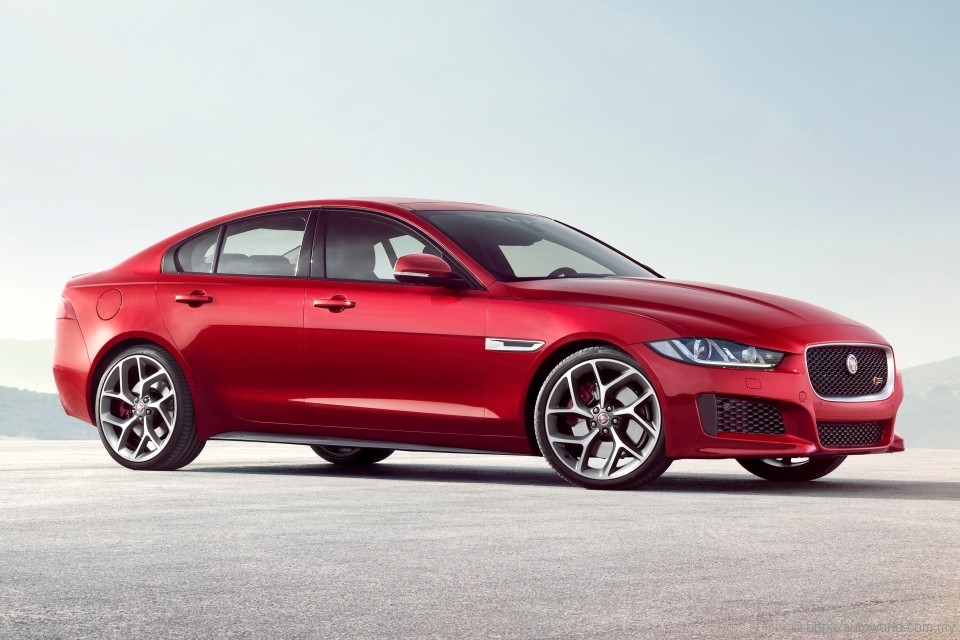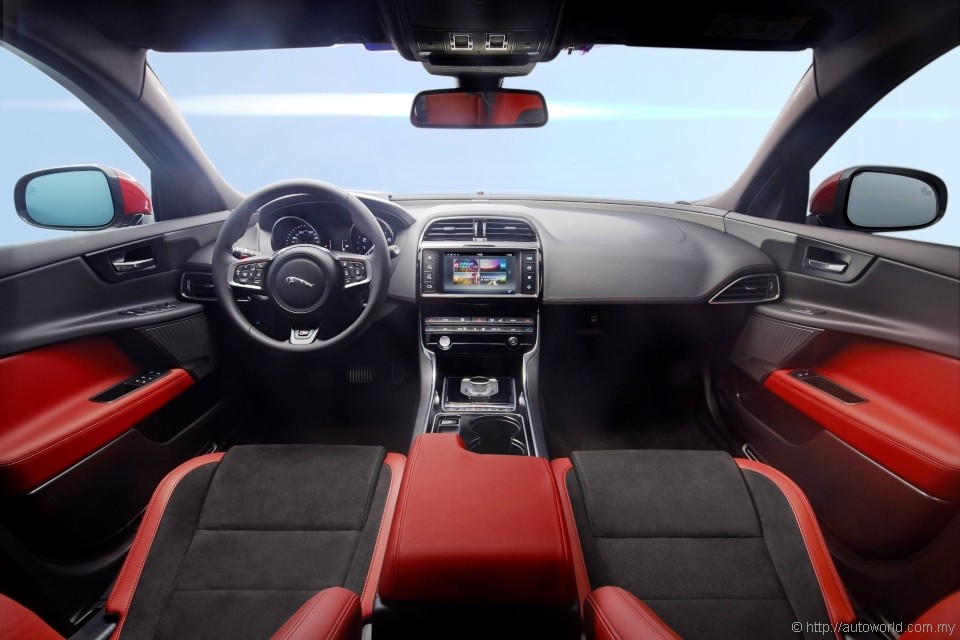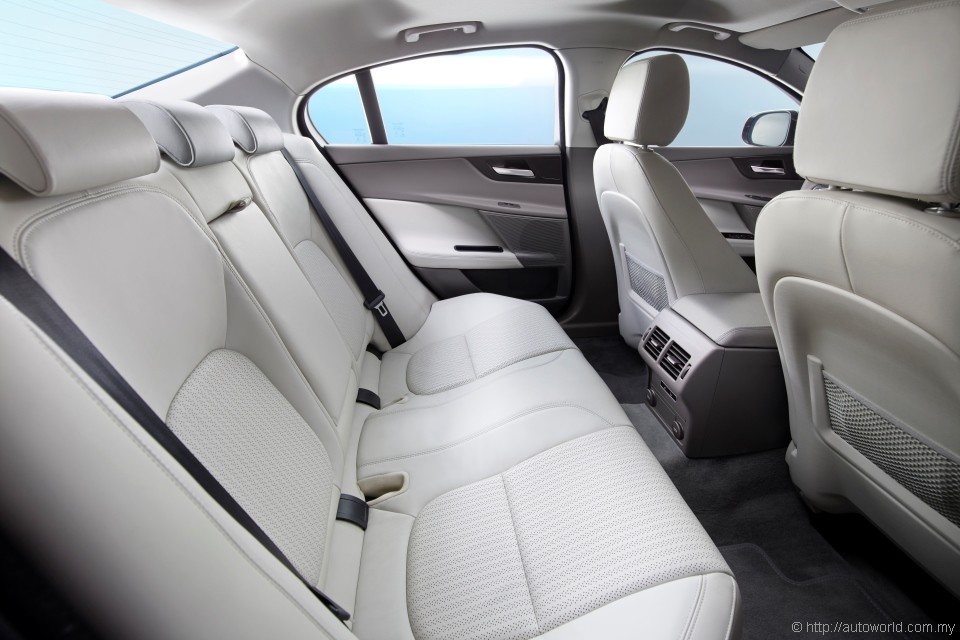Jaguar XE previewed ahead of full debut in Paris
The Jaguar XE makes its first public appearance at London this week ahead of its global launch scheduled at the Paris Motor Show next month. Set to go on sale in 2015, the new XE takes on the likes of the BMW 3 Series and Mercedes C-Class in the compact premium sedan segment, going into battle with engines ranging from the frugal, a 99 g/km CO2 turbodiesel, to the furious, a 3.0-litre supercharged V6.
Like other Jaguar models, the XE’s construction is aluminium intensive, and it is the first vehicle to be underpinned by Jaguar Land Rover’s new modular platform. Drawing on Jaguar’s extensive experience with the material, aluminium panels used on the XE are not only high-strength, they are made thinner than before, and also primarily of recycled metals.
The XE is the world’s first automobile to use RC 5754, an aluminium alloy made predominantly of recycled material – this breakthrough accelerates Jaguar towards its goal of using at least 75% recycled material in new vehicle construction by 2020. Besides body panels, the XE also contains 46kg of recycled plastics and renewable materials.
“The XE is as strong and light as it could possibly be thanks to exhaustive analysis and by bringing the latest engineering techniques to bear on its design. It has been challenging to accomplish but the XE’s structure is absolutely at the cutting edge of what is achievable today,” said Dr Mark White, Jaguar’s vehicle body Chief Technical Specialist.
At the corners, the XE utilizes highly advanced suspension configurations, featuring double wishbones up front and integral link rear suspension. Like the rest of the vehicle, much of the suspension arms and links consist of aluminium, thus keeping unsprung weight low.
The XE is also notable for being the first Jaguar model to utilize electric power steering, and Jaguar claims that the transition from the traditional hydraulic set up has helped save 3% of CO2 emissions with the XE. When they were first introduced, electric power steering was much criticized for lacking in feel, but Jaguar notes that its benefits include better tuning potential (meaning it’s easier to develop a wider range of settings) and lower energy consumption, which directly benefits fuel economy.
“The introduction of electric power steering was a big step but one we were able to take confidently. The almost infinite range of possibilities it provides in fine tuning has enabled us to achieve the responsive, connected steering feel we require in a Jaguar – without compromise,” said Mike Cross, Chief Engineer of Vehicle Integrity in Jaguar.
Powering the XE is a range all-aluminium four- and six-cylinder engines led by a supercharged 3.0-litre petrol V6 in the flagship XE S model developing 335hp and 450Nm; with an electronically-limited top speed of 250kph, the XE S is capable of hitting 96kph from rest in just 4.9 seconds.
Main-selling engines, however, are likely to hail from the newly-developed Ingenium family developed with a focus of lowering CO2 emissions. First engines of the family will be a series of 2.0-litre four-cylinder diesels available with a variety of outputs starting from a 157hp/380Nm version that emits only 99 g/km of carbon dioxide. Available transmissions for the XE include a 6-speed manual reserved for diesel models only and ZF’s popular 8HP 8-speed torque converter automatic transmission available for all.
Besides exceptional fuel economy, the new Ingenium diesel engines are also built for durability, with recommended service intervals of 2 years or 34,000km. To further minimize repair costs and downtime, Jaguar has placed key components within easy reach for repairs and replacement.
Full details of the entire XE range will be announced at the Paris Motorshow in October.
Pictures: Official Jaguar release.





























